Heart Experts - Articles
Cardiovascular news from the experts
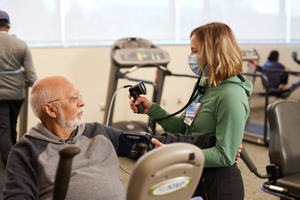 | Cardiac Rehab Helps Heart Patients HealResearch Shows El Camino Health's Program Improves Outcomes After Heart Event Cardiac and Pulmonary Wellness Center team: Recovering from a heart attack, heart surgery or other cardiovascular event is a critical and vulnerable time — and the right care, support and guidance can make all the difference. Participating in a cardiac rehabilitation program can help improve your chances for a full recovery and may help improve your quality of life. At El Camino Health, improving your health and life is a high priority, and our cardiac rehab program has a record of success in improving outcomes for our patients. Read more (Click to expand or close) So what exactly is cardiac rehab? It's a medically supervised program of exercise, education and support designed just for you — to help improve your heart health now and into the future. You’ll receive up to 36 sessions with our cardiac rehab team of nurses, exercise physiologists and other professionals. The program includes monitored physical activity, as well as help with nutrition, stress reduction, managing medications and, if needed, help with tobacco cessation. You may benefit from cardiac rehab if you have or have had:
Lifesaving BenefitsIn 2017, a meta-analysis of related studies showed that heart patients who participated in a cardiac rehab program had lower mortality and better outcomes overall than patients who did not receive cardiac rehab. Heart attack patients who had cardiac rehab showed a:
Following coronary bypass surgery, patients who received cardiac rehab showed a reduction in mortality of up to 40%. Similarly, heart failure patients who received cardiac rehab showed a 45% reduction in mortality, and patients who had undergone valve procedures showed increased exercise capacity following rehab. Tailored ExercisePhysical activity is critical to heart health, and it's a major component of cardiac rehab. Our exercise physiologists work with you to create a safe, effective exercise plan designed for your needs, condition and goals. The main focus is on aerobic exercise to strengthen your heart and improve its function. Resistance, flexibility and balance training may also be incorporated, and your plan will be updated as you recover and make progress. After you graduate from cardiac rehab, you'll have all the training and information you need to continue your exercise program on your own. A special arrangement with the El Camino YMCA provides a free 60-day membership for those who have completed our cardiac rehab program, and El Camino Health's Wellness Program is also available to help make healthy lifestyle changes permanent. Healthy EatingA whole-foods plant-based diet is recommended by the U.S. Dietary Guidelines for Americans, World Health Organization, the American Diabetes Association and the American Cancer Society. Eating plant-based does not necessarily mean going full-blown vegan or vegetarian. It simply means emphasizing plant foods — fruits, vegetables, whole grains, nuts, seeds, beans and other legumes — and reducing the consumption of animal foods. A plant-based diet can help reduce saturated fat, which is now considered the main culprit behind inflated cholesterol and triglycerides, which can lead to cardiovascular problems. Popular plant-based diets include the Mediterranean diet and the DASH diet. The focus is no longer on limiting cholesterol overall, but rather on reducing saturated fats. Saturated fats, such as lard, butter, fatty meats and fried foods, can increase LDL cholesterol ("bad cholesterol"), while unsaturated fats, such as olive oil, canola oil and avocados, can help increase protective HDL cholesterol levels. Eating foods with plenty of soluble fiber, such as beans, oatmeal, barley, chia seeds and apples can help reduce LDL cholesterol. Eat more foods that contain omega-3 fatty acids. Ground flaxseeds, oily fish, hemp seeds, chia seeds, walnuts and pumpkin seeds contain omega-3 fatty acids. Eating these foods helps to lower triglycerides, a common fat in the blood that contributes to high cholesterol. A healthy diet and lifestyle can also protect against prediabetes (elevated blood glucose that is not yet high enough to be considered Type 2 diabetes). Diabetes can increase the risk of heart and vascular problems, and many Americans have prediabetes but don't know it. According to the Centers for Disease Control and Prevention and the American Diabetes Association, if you lose 5-7% of your body weight and increase your physical activity to at least 150 minutes of "moderate intensity" aerobic exercise per week, you may be able to reverse prediabetes. Managing StressStress is considered a modifiable risk factor for heart disease, and learning to manage it effectively can help you avoid unhealthy behaviors such as smoking or overeating. Our cardiac rehab patients participate in a course called StressMatters™ that offers a variety of physical, behavioral and emotional strategies to help reduce and manage stress. The American Heart Association recommends regular exercise, making time for friends and family, getting enough sleep, practicing relaxation techniques, finding a hobby, and maintaining a positive attitude. Other stress-busting strategies include spending time in nature, yoga, breathing techniques, less screen time, positive self-talk and gardening. Our program helps you find ways to work these techniques and others into your life. Many of our cardiac rehab patients find that managing stress in healthy ways makes a huge difference in their quality of life. Better stress management can help your heart heal and improve your overall health as well. Learn more about Heart and Vascular Care at El Camino Health. |
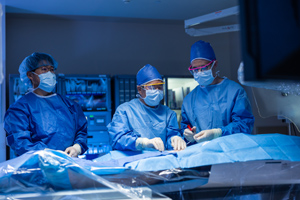 | Interventional Cardiology Transforms Heart and Vascular CareEl Camino Health is Leading Progress and Saving Lives El Camino Health Interventional Cardiologists: Heart and vascular procedures have historically involved long hospital stays, long recovery times and, often, a high risk of morbidity and mortality. Interventional cardiology, which often uses catheter-based approaches instead of large incisions or open-heart surgery, is changing the game dramatically in recent years. El Camino Health is one of the pioneers. Read more (Click to expand or close) Community hospitals are not usually known for groundbreaking research and the development of new technologies and treatment options. But our team serves Silicon Valley, and the spirit of innovation and constant improvement has infused our culture. We are fortunate to be part of a team of clinicians and researchers who are committed not only to providing the safest, most effective care possible — but also to advancing interventional cardiology through innovation and the careful, timely application of new knowledge. El Camino Health's close collaboration with the nationally respected Fogarty Innovation Center and their location on our hospital campus helps to support and speed collaboration and progress. Innovations Already Saving LivesAmong other contributions, our team has been vital to the development and evolution of the Mitraclip, a device that can treat mitral valve disease in patients who are not candidates for traditional surgery. We recently completed enrollment for a study comparing the use of the Watchman device to traditional anticoagulant therapy for atrial fibrillation (AFib). We are leaders in transcatheter aortic valve replacement (TAVR) for patients with severe aortic stenosis. Yet our most promising innovation to date may be the introduction of a comprehensive clinic model for interventional cardiology. Our team's coordinated clinic approach is designed to streamline care, improve outcomes, and enhance the patient and family experience. Patients can meet with a cardiac surgeon, an interventional cardiologist and others involved in their care, without having to attend multiple appointments at various locations. Each patient receives a complete examination and is presented with all options so they can make an informed, shared decision about the treatment plan. They may be a candidate for a minimally invasive procedure or surgery. Or, perhaps waiting and monitoring is the most appropriate choice. Most patients leave their first appointment with a procedure date and a plan of care designed specifically for their needs and preferences. Mitraclip: Treating Mitral Valve Disease When Surgery Isn't an OptionThe standard treatment for mitral valve disease — in which the heart valve doesn't close properly — is open-heart surgery. When Dr. St. Goar's team developed the MitraClip (manufactured by Abbott), it opened up a new treatment option for patients who are at too great a risk to have traditional surgery. The new procedure is called TEER (transcatheter edge-to-edge repair). The MitraClip is placed using a catheter, a thin tube that is guided through a vein in the leg to reach the heart. To date, MitraClip is the only alternative to open surgery that is approved by the Food and Drug Administration (FDA). It's also approved for patients with congestive heart failure who have exhausted other treatment options. Different sizes and configurations of the device are now available to better fit different patients and situations. Watchman: Managing AFib without AnticoagulantsBecause AFib creates an irregular heartbeat, blood can pool in an area of the heart called the left atrial appendage, increasing the risk of blood clots and stroke. The Watchman device is placed using a catheter and keeps clots from moving into the bloodstream and causing a stroke. It is approved by the FDA for patients with AFib who are unable to take anticoagulants because they have conditions that increase their risk for bleeding. The Champion trial compared Watchman use versus traditional anticoagulation therapy for AFib patients who can stay on their anticoagulants. Enrollment was completed at the end of 2022, and the study is being evaluated by the FDA. The results could lead to possibly expanding Watchman use to include all AFib patients. El Camino Health was a site location for this study. TAVR: Replacing the Aortic Valve for Severe Aortic StenosisSevere aortic stenosis narrows the aortic valve opening, restricting blood flow to the rest of the body. Replacing the aortic valve has conventionally required open-heart surgery. Transcatheter aortic valve replacement (TAVR) offers a minimally invasive treatment using the Medtronic CoreValve Evolut valve and the Edwards SAPIEN valve. TAVR replaces the diseased valve with a bio-prosthetic heart valve. A catheter guides the valve to your heart where it is expanded, pushing the diseased valve aside. El Camino Health was selected as one of 40 hospitals during the original research on the device, which is now commercially available for the treatment for aortic stenosis. Community Service and Global ImpactOur team has always found El Camino Health's leadership to be highly supportive of its physician community and our close collaboration with industry — from large, established companies to small, promising start-ups. This culture of partnership, innovation and service is key to providing the best possible care for our own patients, while also having a national and global impact on the future of heart and vascular care. Learn more about Heart and Vascular Care at El Camino Health. |
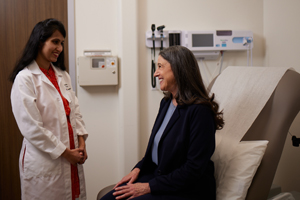 | Heart and Vascular Care: The Patient Journey and What to ExpectEvidence-Based Process of Care Streamlines Patient Experience Written in collaboration with El Camino Health's team of cardiovascular experts and specialists A patient's heart care journey at El Camino Health can begin in many ways. Many heart patients come in by ambulance. Other times, a primary care or urgent care provider may refer a patient for specialized heart or cardiovascular care. Others may come on their own, seeking help for a new or longstanding problem or trying to prevent a health crisis. Read more (Click to expand or close) No matter how a patient presents, the heart and vascular care professionals at El Camino Health — from highly specialized cardiologists and vascular surgeons to nurses, technicians and office staff — aim to provide the most appropriate care as quickly and smoothly as possible. Whenever possible, we work with patients and other providers to create an individualized care plan for each patient, in line with their needs, goals and lifestyle. EmergenciesIf you enter an El Camino Health facility through the emergency room during a heart or vascular crisis, you'll receive the immediate, advanced care needed to give you every chance for complete recovery. For example:
When you enter through an emergency room, our emergency department staff will quickly assess your situation and ensure the right expertise is immediately available. Our team is specially trained to recognize all heart and vascular events. We work together, and with you and your family, to ensure you get the level of care needed, as quickly and seamlessly as possible — as well as follow-up care once the emergency is over. Depending on the type of heart or vascular emergency, the care plan might include:
Physician ReferralsOften, primary care physicians and cardiologists refer patients to El Camino Health and the Norma Melchor Heart & Vascular Institute for highly specialized care. These referrals are at testament to our advanced diagnostic and treatment options, technology and expertise. Referring physicians know we can provide advanced care and treatment options not widely available locally, including access to the latest therapies through clinical trials. Our advanced echocardiography lab and diagnostic services provide critical insight into your condition to inform decisions. When you're referred to El Camino Health for specialized heart and vascular care, you'll meet with one of our team for an evaluation and to assess your condition and needs. We'll create a treatment plan tailored to your needs and preferences, and make sure you know what to expect and what you need to do at each step, such as how to prepare for surgery or other procedures. Depending on your needs, condition and preferences, your treatment plan and follow-up care may include:
Taking Action on Your OwnOne of the best gifts you can give yourself and your loved ones is to be proactive about your heart and vascular health. Cardiovascular disease is the top cause of death for Americans, and heart and vascular events can change lives in just a few seconds. Fortunately, there are many ways to reduce your risk for cardiovascular disease. Being aware of your risk — and facing the truth about any lifestyle choices or behaviors that might be increasing it — will help you make appropriate decisions about prevention, screening and when to seek care. An important first step is to talk to your primary care provider about your risks and how to support your cardiovascular health. Follow up on any recommendations, and know the signs and symptoms of heart attack, stroke and other serious problems you might be at risk of. You can also get helpful information through health fairs, health libraries [link to and other community resources. El Camino Health partners with other organizations to offer education, outreach and screening through school and community events. Our vascular screening program offers a chance for at-risk members of our community to get a free 30-minute ultrasound to check carotid arteries, abdominal aorta, and extremity arterial flow. You might benefit if you are:
No matter how you begin your heart care journey at El Camino Health, we're here for you and your family at every step. Be assured that you'll receive the highest quality care available, from a team that puts your well-being and comfort first. Our preventive care, screening, diagnosis, minimally invasive treatment options, advanced surgery, evidence-based rehabilitation and other resources are unmatched in the community we serve, and we're constantly working to improve the patient experience — and to improve heart care and health in our community and beyond. Learn more about Heart and Vascular Care at El Camino Health. |
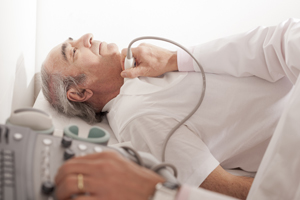 | Vascular Screening Could Save LivesQuick and Painless Screening Can Identify Problems in Arteries George Lee, MD and Purvi Dubal, Heart and Vascular Institute Operations Manager Your vascular system carries your lifeblood, and problems can be virtually undetectable until they threaten life or health — but a quick, painless procedure can identify problems while they can still be treated effectively. Vascular screening at El Camino Health has no out-of-pocket cost, and it could save your life. Read more (Click to expand or close) Blood vessels — arteries carrying oxygen-rich blood and veins carrying blood back to the heart — are the expressways, streets and alleys of the circulatory system. Conditions such as blood clots or hardening of the arteries can create "traffic jams" in blood vessels, obstructing the flow of blood to or from any part of the body. Without oxygen, no part of the body can function. As a vascular surgeon, I often see the effects of undiagnosed vascular issues. Because vascular conditions and diseases often have no early symptoms, you may not think about your vascular health until your life or well-being are at stake. Cardiovascular disease is the top cause of death in the United States, and any problem with the vascular system needs to be evaluated and treated as promptly as possible. Early diagnosis often means some cardiovascular disease can be managed with lifestyle interventions and medications instead of invasive surgery. Other vascular conditions, such as aneurysms, may need surgical repair to prevent rupture or other life-threatening events. Vascular Screening: 30 Minutes Well SpentThe 30-minute vascular screening offered through the El Camino Health Heart & Vascular program is a painless, noninvasive ultrasound of the neck, abdomen and legs to check for common vascular diseases. This screening is a vital tool to help us assess your risk of vascular health conditions, so that doctors can intervene early. During a screening, we look for:
We'll share the results with you and your physician and recommend any steps needed. If you need more advanced, specialized treatment, our team is here for you. Our board-certified vascular surgeons offer a full spectrum of care, covering every possible treatment for circulatory disorders, from medical management, to endovascular procedures, to open surgical procedures. To treat vascular problems, we use the least invasive options available. Innovations in surgery have made open surgeries less common. Endovascular procedures require only a tiny incision and usually have much shorter recovery times than open surgeries. Our vascular surgery team will make sure you understand all your options. When to Get ScreeningVascular disease can occur at any age but is more common among older people. Most people under age 40 do not need vascular screening. You are eligible for screening if you are:
Family history of vascular disease — such as immediate family members who have had stroke, heart attack, high blood pressure, kidney failure, sudden cardiac death or abdominal aortic aneurysms — may also increase your risk. Talk to your doctor about your personal risk and whether you should get screened early. El Camino Health provides screenings at the Advanced Care and Diagnostic Center on El Camino Health's Mountain View campus. The screening is noninvasive and takes about 30 minutes. Wear loose, comfortable clothing. No referral is required, and in most cases, there are no out-of-pocket costs. Find out more about free vascular screening Learn more about Heart and Vascular Care at El Camino Health. |
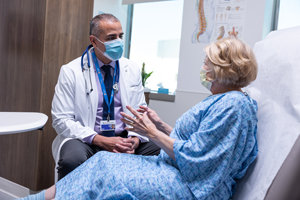 | Advanced care for women's heartsWomen's Heart Center and two new cardiology programs take aim at women's heart problems. We've known for decades that heart disease is the top cause of death and a threat to quality of life for women as well as men. Yet because most past cardiovascular research has focused on men, we're still learning how heart disease can affect men and women differently, and how to best approach its prevention and treatment in women. Read more (Click to expand or close) As a cardiologist and a woman, I have a personal and professional interest in improving heart care for everyone, especially women. That's why I'm excited to be leading El Camino Health's Women's Heart Center, as well as two new cardiology programs tackling heart risks that widely affect women. El Camino Health has long made women's health a priority, and I'm pleased to be part of that commitment. Our Women's Heart Center — part of the Norma Melchor Heart and Vascular Institute — provides preventive care, treatment and management tailored for women and their needs. The center's specialists and other professionals are trained and experienced in helping women keep their hearts as healthy as possible for as long as possible. Now, El Camino Health is taking aim at health conditions specific to women through two new cardiology programs. Our cardio-obstetrics program is designed for women who have heart risks or conditions related to a current or past pregnancy, and our cardio-oncology program helps people who are at risk for — or living with — heart problems related to cancer treatment. Better care for women's heartsRecent research has shown that women with heart problems fare better if their cardiologist is a woman. They're also more likely to survive a heart attack if their emergency room physician is a woman. These findings suggest that heart care for women is not as good as it could be — and El Camino Health is working to improve it for our own patients and all women. At the Women's Heart Center, we take care of all kinds of women and all kinds of hearts. We work with healthy women who want to stay that way, and with women who already have cardiovascular disease or a serious heart condition. Some women come because they have a family history of heart disease. Some have health conditions or long-term habits that put them at high risk for heart problems. Others have no risk factors but want to find ways to stay healthy, live longer and enjoy healthier lifestyles. Our approach to women's heart health includes proven lifestyle and wellness care, combined with the most advanced treatment options and technology. Every care plan is tailored specifically to the patients' needs, goals and preferences. Sometimes, women know what they need to be doing, but they’re so busy focusing on their work, families or passions that they don't always apply their knowledge about heart health. We help women find ways to enjoy taking care of themselves and making their heart health a priority. Cardio-oncology: Combating the heart effects of cancer treatmentCancer treatment has come a long way in the past few decades. More Americans are surviving cancer long-term — and in some cases, they're living with heart damage or increased risk of heart problems brought on by their cancer treatment. We've always known that traditional cancer treatment, including chemotherapy and radiation therapy, can cause cardiac complications, sometimes up to 20 or 30 years later. It's important that women who have been treated for any kind of cancer, particularly breast cancer, have cardiological care and monitoring for heart problems as they grow older. Many of these cardiac complications can be catastrophic, so it's critical that they're caught as early as possible so that care and interventions can be provided before the problem becomes life-threatening. With each new medicine or therapeutic agent against cancer, the heart risks change and must be reconsidered. Doxorubicin and Herceptin, for instance, have been game-changers in treating certain breast cancers. We now know these drugs can greatly increase a woman's risk of heart failure and other heart problems later in life. By monitoring men and women for heart problems after cancer treatment, we can improve their outcomes and help them enjoy longer, healthier lives. Most will do very well with the right awareness and care. Cardio-obstetrics: Reducing heart risks related to pregnancy and childbirthPregnancy and childbirth can take a toll on heart health for some women. For one thing, your blood volume increases by as much as 50% during pregnancy, putting a strain on your heart and circulatory system. The risk for related heart problems may not end when you give birth. Recent research has shown certain heart-related complications during pregnancy are associated with a much higher risk of heart problems later in life. A difficult pregnancy or childbirth may provide clues about your heart's future health. Prenatal care is vital in improving all outcomes for mothers and their babies. Heart problems or other complications that are not effectively diagnosed and managed can be serious, even fatal. The damage might show up suddenly, immediately, gradually or even years later. Women who have had gestational diabetes or any pregnancy-related high blood pressure disorder — such as gestational high blood pressure or preeclampsia — have a higher long-term risk of heart and blood vessel problems. A premature birth or other difficulties during pregnancy or childbirth have also been associated with an increase in the risk of heart problems later in life. Awareness and vigilance can greatly reduce these risks and help women get the care they need earlier in the game. A woman nearing menopause who has had a difficult pregnancy in years past may be an excellent candidate for early intervention. Improving the future of heart careFortunately, awareness about women's heart health and heart risks has increased dramatically in recent years. The general public is learning that heart disease can affect anyone, and that in many cases it can be prevented. The medical community is recognizing that improving heart care for all adults must be a priority. El Camino Health is a leader in these efforts, and lives are being improved and saved. With continued commitment, we can ensure that our children enjoy healthier hearts and futures. To find out more about El Camino Health's heart care for women, contact us. |
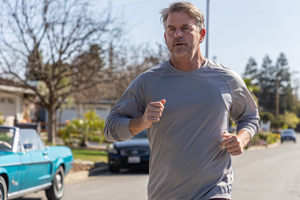 | Preventing and managing heart disease: Lifestyle is keyFor preventing and treating cardiovascular problems, the heart of your healthcare team is you. There's no getting around it. Eating right, staying as active as you can, and managing stress in healthy ways are all important for your physical and mental health — and your heart. Of course, most of us know that — but knowing and doing are two different things. Read more (Click to expand or close) So, what is a healthy lifestyle, and how do you create one? Healthy lifestyle choices include:
Healthy eating and staying active are critical. Also, while we can't always avoid stress, we can learn to manage it in healthy ways. Lifestyle medicine incorporates all these goals to help you live your best life while you take care of your health and heart. In fact, it's estimated that up to 80% of heart disease cases could be prevented with a healthy lifestyle. Healthy eatingThe idea of food as medicine isn't new — Hippocrates referred to food as medicine more than 2,000 years ago. Today, "food as medicine" refers to using food and nutrition to help prevent or treat chronic diseases, such as heart disease or diabetes. Science and medicine have long stressed the benefits of healthy eating, as well as the possible consequences of an unbalanced diet high in fat, sugar, refined carbohydrates and "junk food." Keeping an eye on your lipid levels, particularly LDL (low-density lipoprotein) cholesterol, is one way your doctor can help. Blood glucose (sugar) levels are also important, especially if you are at risk of diabetes. The core of food as medicine is selecting mostly plant-based whole foods, such as whole grains, legumes, fruits, vegetables, nuts and seeds. Enjoy meat and dairy less frequently and in smaller amounts than in a traditional American diet. For example, meat might be used as a garnish rather than the focus of a meal. Lentils or white beans can take the place of ground meat in a pasta dish or other recipe. Variety is key to a balanced, enjoyable eating plan, and many heart-healthy foods can be used in new or nontraditional ways. Oats, for example, are a fantastic choice. Oats contain a substance called beta-glucan, a soluble fiber, which helps reduce LDL (remember "L" for "lousy") cholesterol levels. Fruits and vegetables are essential in a heart-healthy diet. They're rich in phytochemicals, soluble fiber and many other beneficial heart-healthy nutrients. To make sure you get a healthy mix, eat a variety of colorful produce. Legumes, such as beans, lentils and peas, are an excellent source of protein, fiber, folate and iron. Research has shown that including legumes in the diet four times per week can reduced the risk of coronary artery disease by 14%. Our heart-healthy cooking videos can provide inspiration in the kitchen. Staying activeJust about any kind of exercise can be good for your heart, from walking to weight training. But aerobic exercise (sometimes called cardio) is the best type for your heart. Aerobic exercise uses the large muscles in your body and gets your heart pumping faster. Experts recommend getting at least 30 minutes of moderate aerobic exercise on most days — about two and a half hours a week. You can also break this up into a few 10- or 15-minute sessions each day. Before you start an exercise program or increase your aerobic activity, talk to you doctor or primary care provider. Your doctor can help you choose activities that are best suited for your age, fitness level and overall health. You don't have to go to a gym or count every step to gain the benefits. According to Medline Plus from the National Library of Medicine, moderate aerobic exercise can include:
For even more heart benefits, consider adding vigorous activity, such as stair climbing, jogging or heavy yard work. If all your exercise is vigorous, aim to get at least 75 minutes each week. Managing stressEveryone has to cope with stress. A survey conducted in 2017 by the American Psychological Association found that more than 70% of respondents reported having at least one symptom of stress over the past month. Stressors from the COVID-19 pandemic have only made matters worse. Chronic stress can affect your mental and physical health, and we're still learning about the connection. But we've known for decades that long-term activation of your body's stress response system, along with prolonged exposure to cortisol and other stress hormones, may put you at risk for a wide range of health troubles — including high blood pressure, heart disease and stroke. Severe or chronic stress can affect heart health in a variety of ways:
How you respond to stress is key. To reduce stress or cope with it more effectively:
Keep up with preventive careWhether you're trying to stay healthy or already living with a heart condition, regular visits with your doctor or primary care provider are critical. Closely monitoring lipid levels, blood pressure and other health factors can help your doctor assess your heart risk and recommend steps to protect your heart health. |
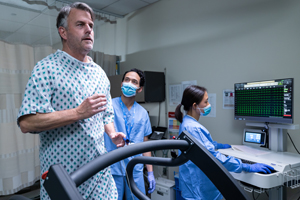 | Beating arrhythmia: Electrophysiology leads to better, safer careTechnology helps regulate the heart's timing. An irregular heartbeat (arrhythmia) can be relatively harmless — or it could lead to serious complications, including stroke, cardiac arrest or heart failure. If you have an arrhythmia, you may not know it and feel fine. Or you may have symptoms such as a fluttering in the chest, chest pain, shortness of breath, sweating, dizziness and fainting. Read more (Click to expand or close) If you've been diagnosed with a benign arrhythmia and have no symptoms, your doctor might advise doing nothing. However, if you're having symptoms, or if you have an arrhythmia that puts you at high risk for heart problems, you need to be evaluated by a cardiologist — and you’re likely to hear the word "electrophysiology." Electrophysiology may sound like a 21st century innovation, but its origins can be traced all the way back to the 18th century. An Italian physician named Luigi Galvani was dissecting a frog when he discovered what he called "animal electricity." Now we know that all cells and tissues in our bodies have electrical properties. Today's electrophysiologists are specialists in the electrical activity of the heart — and how to treat the electrical problems that can cause the heart to beat irregularly. As a cardiac electrophysiologist at El Camino Health, I have the privilege and satisfaction of using the most advanced procedures and products, and am able to quickly, safely and effectively treat arrhythmias to stop or ease symptoms and prevent further damage. Technology is constantly evolving and improving from major international companies, but also from smaller companies and startups, many based right here in Silicon Valley. Here at El Camino Health, we are constantly applying new knowledge and the latest tools to provide the best possible care for our patients. Electrophysiologists are able to treat many types of arrhythmias, whether it is too fast (tachycardia) or too slow (bradycardia). These arrhythmias include such conditions as:
After noninvasive testing is completed, an electrophysiology study may be advised. This minimally invasive procedure involves passing a very thin tube called a sheath through a vein in the leg. Thin wires with electrodes on the tip are advanced through this sheath to reach the heart, using moving X-ray imaging as a guide. Catheterization technology has evolved so that many arrhythmias can be quickly diagnosed and treated effectively, and the patient can sometimes even go home the same day. Treating arrhythmia: Ablation, implantable devices, medicationsMedications are often used to treat some arrhythmias or to prevent their possible complications. All these drugs have potential side effects, and some people cannot take them, or their arrhythmia may not respond well. Today's treatment options can often correct an arrhythmia so that medication is no longer needed. Some arrhythmias may be amenable to treatment with cardiac ablation. Ablation uses energy (heat or cold) to make tiny scars in the heart, precisely placed to block electrical signals that are causing the arrhythmia. Ablation has a long record of safety and efficacy, especially at experienced centers such as El Camino Health. However, all procedures have some small degree of risk which include bleeding, clotting or collateral injury to adjacent structures. Catheter ablation is often performed during the same procedure as an electrophysiology study, preventing the need for another procedure. Some patients are discharged the same day or the following morning. An arrhythmia may require the placement of an implantable device, such as a pacemaker or an implantable cardioverter defibrillator (ICD). Some innovative devices can be placed through catheters, preventing the need for traditional surgery. Pacemakers use electrical pulses to regulate the heartbeat. ICDs can actually monitor the heart’s rhythm and deliver shocks as needed. As technology improves, so does the treatment and management of arrhythmias. In some cases, an arrhythmia may not be life-threatening, but can cause troubling physical symptoms, as well as anxiety, discomfort or, in severe cases, disability. Some people have endured their symptoms for decades. With today's minimally invasive treatment options, treating these patients can greatly improve their quality of life without undue risk, possibly eliminating the need for medication. If you have been diagnosed with an arrhythmia or think you may have one, it's important to talk to your doctor. If you're not having symptoms, you may not need immediate treatment. But if your arrhythmia is increasing your risk of severe heart problems or is causing symptoms, you need to be evaluated by a cardiologist as soon as possible. The electrophysiology team at El Camino Health offers complete arrhythmia care. We can track, treat or monitor your arrhythmia, to protect your heart, your life and your health. |
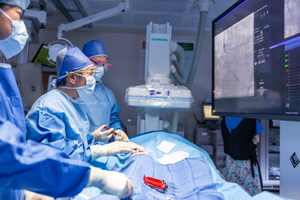 | Innovations in CardiologyAdvances in imaging lead to innovation, new treatment options. Since the first electrocardiogram (EKG or ECG) was used to measure heartbeats in 1887, diagnosing and treating heart conditions has been through many revolutionary changes. Today, cardiologists at El Camino Health can view the heart and vascular system in a variety of ways, observe how it functions in real time and even perform complex procedures without the need for open-heart surgery. Read more (Click to expand or close) As a cardiologist and medical director of echocardiography at El Camino Health, I am fortunate to see firsthand how advances in imaging technology can lead not only to easier, more precise diagnosis but also to new, less invasive procedures — and ultimately better care. New, more advanced imaging technology has dramatically changed cardiovascular care in recent years, and it's still evolving rapidly. At El Camino Health, we're not just keeping up; we're on the front line, advancing diagnosis, treatment and personalized heart care. Honestly it seems like we are constantly adapting our techniques to some new idea, and because we're here in Silicon Valley, we are often among the first to see some developments. The two biggest gamechangers in cardiac imaging in recent years have been computed tomography angiography (CTA) and high-resolution, three-dimensional (3D) echocardiography. Though CT scans and echocardiograms aren't new, the technology in both cases has become much more sophisticated — and powerful. A new kind of CT scanComputed tomography, often called a CT scan or CAT scan, uses X-rays to create detailed images of areas inside the body. CT angiography, one of the gamechangers I've already mentioned, carries CT scanning much further, providing detailed pictures of the heart and blood vessels throughout the body. CTA can identify narrow or blocked areas of a blood vessel, as well as the presence of arterial plaque, the fatty substance made of cholesterol and other materials from the blood stream. Being able to detect the presence of plaque is a huge advancement in diagnosis, because plaque is a bigger predictor of long-term heart attack risk than blood pressure, cholesterol levels or other traditional risk factors, so detecting it early can potentially be lifesaving. This noninvasive test takes less than 10 minutes and presents modest radiation exposure, so it's quite safe. It allows us to get a complete picture of heart arteries. In fact, in many cases, we can use it to rule out coronary disease, which helps the patient avoid unnecessary procedures. If a patient has symptoms for heart disease, this can be a very useful test. Echocardiography shows the heart working in real timeEchocardiography uses ultrasound to monitor heart function and has been in use for decades. But today's high-resolution, three-dimensional, real-time imaging of anatomy and function is not your grandfather's echocardiogram. The development of high-resolution echo technology with 3D capability is another gamechanger. It allows us to visualize both anatomy and function of the heart. We can see the heart pumping, the valves in motion and other details so we can be very precise about what the problem is. It also helps us determine whether there are minimally invasive or surgical options that would solve the problem. Better technology leads to innovation: Structural heartAs imaging technology has improved, research into new, less invasive or more effective treatment options has picked up speed. Being able to see the heart and vascular system in such detail sparks ideas and innovation. Imaging to guide catheter-based procedures is one of my clinical interests, and what's happening today is very exciting. We're learning how to fix problems that previously had no good solution, and we're developing less invasive procedures for problems that once required open-heart surgery. Many of these less invasive treatment options are in the emerging area of structural heart disease, focusing on anatomical abnormalities of the heart itself, including valves, walls or chambers. Two examples of recent innovation are the MitraClip and the Watchman device. The MitraClip, now in use worldwide, was invented by El Camino Health's own Fred St. Goar, MD. El Camino Health's cardiology team was one of the first in California to use the MitraClip to treat mitral valve disease (also called mitral valve regurgitation) — a condition in which the heart valve doesn't close properly. The standard method of treatment is open-heart surgery, which isn't feasible for many patients because of age or overall health. The MitraClip is placed using a catheter, a very thin tube, which is passed through a vein in the groin. Advanced imaging guides the placement in the heart and allows function to be assessed with the clip in place so that adjustments can be made right away. This device offers a treatment option for people who have severe symptoms and who are at too great a risk to have traditional surgery. The Watchman device is a small implant placed in the heart that can reduce the risk of stroke in patients with atrial fibrillation (often called AFib). The balloon-like implant is inserted near the groin and placed inside the left atrial appendage of the heart to prevent blood from pooling there. With this device, we are often able to reduce the need for blood thinners for Afib, while also reducing stroke risk. Then and nowCatheter-based (also called percutaneous) treatment options are evolving all the time. I started at El Camino Health in 2008, and since then many of the procedures that were strictly surgical can now also be done percutaneously. These treatment options are less invasive, with tiny incisions, and may be lower risk than open surgery for some patients. Recovery is often much quicker. Patients can often go home after one or two days. However, catheter-based solutions aren't for everyone. Surgical methods are tried and true, and we don't yet have long-term results from some catheter-based procedures. Age, overall health, life expectancy, the patient's goals and preferences, and other factors must be considered when making the decision. For instance, in a younger patient, surgery may be the better choice for long-term outcomes, while an older patient is usually at higher risk of surgical complications. Our team members work closely with patients and families so they can make informed decisions about their care. Everyone is unique, and every case is different. As we learn more, we'll continue to develop newer, safer and more reliable treatment options. Cardiology will always be rapidly evolving as new knowledge is applied, and El Camino Health will continue to be a leader in advancing heart care and saving lives. Learn more about Heart and Vascular Care at El Camino Health. |
El Camino Health is a nonprofit organization with campuses in Mountain View, California and Los Gatos, California. Our hospitals have served communities in the South San Francisco Bay Area for over 50 years.
Learn more at elcaminohealth.org